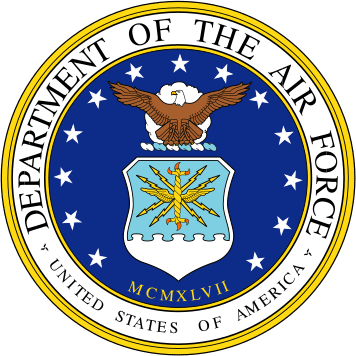757th Airlift Squadron
| 757th Airlift Squadron | |
|---|---|
|
757th Airlift Squadron Patch | |
| Active | 19 May 1943 - Present |
| Country | United States |
| Branch | United States Air Force |
| Type | Airlift |
| Part of |
Air Force Reserve Command 910th Airlift Wing 910th Operations Group |
| Garrison/HQ | Youngstown Air Reserve Station |
| Nickname(s) | Blue Tigers |
| Decorations |
Distinguished Unit Citation Air Force Outstanding Unit Award Republic of Vietnam Gallantry Cross with Palm |

The 757th Airlift Squadron was a regular U.S. Air Force squadron from the 1940s to 1973. The unit was reassigned to the USAF Reserve in 1973. The unit relocated in 1992 from 907 AW Rickenbacker ANGB, Ohio to 910 AW at Youngstown Air Reserve Station, Ohio. The mission of the 757th Airlift Squadron is to maintain a large-area fixed-wing aerial application capability to control disease vectors in combat areas and on Department of Defense installations; to maintain a large-area application capability to control vegetation and pests of vegetation on DoD installations; and to provide aerial spray training.
The 757th operates 8 C-130H2 aircraft, four of which are modified to accept the Modular Aerial Spray System. Each MASS has a capacity of 2,000 US gallons (7,600 L); which can be delivered at a flow rate of 232 US gallons (880 L) per minute, at an altitude of 100 feet (30 m) for a total spray-on time of 8 minutes and 30 seconds.
History
Activated as a B-24 Liberator heavy bombardment squadron in July 1943; assigned to II Bomber Command for training. Primarily trained in Utah and Arizona received deployment orders for the Mediterranean Theater of Operations (MTO) in September 1943. Moved to Massachusetts where the group flew long-range convoy escort missions over the Newfoundland Banks to Long Island Sound, November–December 1943 while station in Italy was being constructed.
Deployed to Southern Italy in January 1944; entered combat in February, being assigned to Fifteenth Air Force. Engaged in very long range strategic bombing missions to enemy military, industrial and transportation targets in Italy, France, Germany, Austria, Hungary, Romania, and Yugoslavia, bombing railroad marshalling yards, oil refineries, airdrome installations, heavy industry, and other strategic objectives. Also carried out some support and interdiction operations. Struck bridges, harbors, and troop concentrations in August 1944 to aid the invasion of Southern France. Hit communications lines and other targets during March and April 1945 to support the advance of British Eighth Army and American Fifth Army in northern Italy.
Returned to the United States in August 1945, being programmed for deployment to the Pacific Theater of Operations (PTO) as a B-29 Superfortress Very Heavy Bombardment Squadron. Many combat veterans of MTO demobilized upon arrival in the United States, and a small cadre of personnel reformed at Sioux Falls Army Airfield, South Dakota at the end of August. Japanese Capitulation in August led to inactivation of unit and assigned personnel being reassigned to other group squadrons or demobilized.
Reactivated in the Air Force Reserve in 1947 with B-29s. Trained at Long Beach Army Air Field, California then inactivating. Reactivated in 1955 as a reserve troop carrier squadron. Was a Tactical Air Support Squadron; special operations and fighter squadron before becoming an airlift squadron in 1992. Inactivated in 2003.
Lineage
- Constituted 757 Bombardment Squadron (Heavy) on 19 May 1943
- Activated on 1 Jul 1943
- Redesignated 757 Bombardment Squadron, Heavy on 29 Sep 1944
- Inactivated on 28 Aug 1945
- Redesignated 757 Bombardment Squadron, Very Heavy on 13 Mar 1947
- Activated in the Reserve on 12 Jul 1947
- Inactivated on 27 Jun 1949
- Redesignated 757 Troop Carrier Squadron, Medium on 11 Mar 1955
- Activated in the Reserve on 8 Apr 1955
- Redesignated: 757 Tactical Airlift Squadron on 1 Jul 1967
- Redesignated: 757 Tactical Air Support Squadron on 25 Jan 1970
- Redesignated: 757 Special Operations Squadron on 29 Jun 1971
- Redesignated: 757 Tactical Fighter Squadron on 1 Oct 1973
- Redesignated: 757 Tactical Airlift Squadron on 1 Jul 1981
- Redesignated: 757 Airlift Squadron on 1 Feb 1992
- Inactivated 30 Sep 2003
Assignments
- 459th Bombardment Group, 1 Jul 1943–28 Aug 1945; 12 Jul 1947–27 Jun 1949
- 459th Troop Carrier Group, 8 Apr 1955
- 459th Troop Carrier Wing, 14 Apr 1959
- 910th Troop Carrier (later, 910 Tactical Airlift; 910 Tactical Air Support; 910 Special Operations; 910 Tactical Fighter; 910 Tactical Airlift; 910 Airlift) Group, 17 Jan 1963
- 910th Operations Group, 1 Aug 1992–30 Sep 2003
Stations
|
|
Aircraft
- B-24 Liberator, 1943–1945
- C-45 Expeditor, 1955–c. 1958
- C-46 Commando, 1955–1957
- C-119 Flying Boxcar, 1957–1969
- A-37 Dragonfly, 1971–1981
- C-130 Hercules, 1981–2003
References
![]() This article incorporates public domain material from the Air Force Historical Research Agency website http://www.afhra.af.mil/.
This article incorporates public domain material from the Air Force Historical Research Agency website http://www.afhra.af.mil/.
- Maurer, Maurer, ed. (1982) [1969]. Combat Squadrons of the Air Force, World War II (PDF) (reprint ed.). Washington, DC: Office of Air Force History. ISBN 0-405-12194-6. LCCN 70605402. OCLC 72556.

